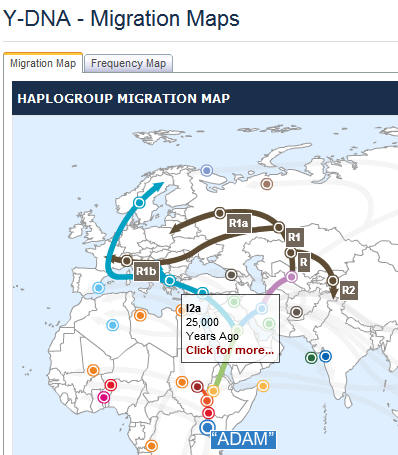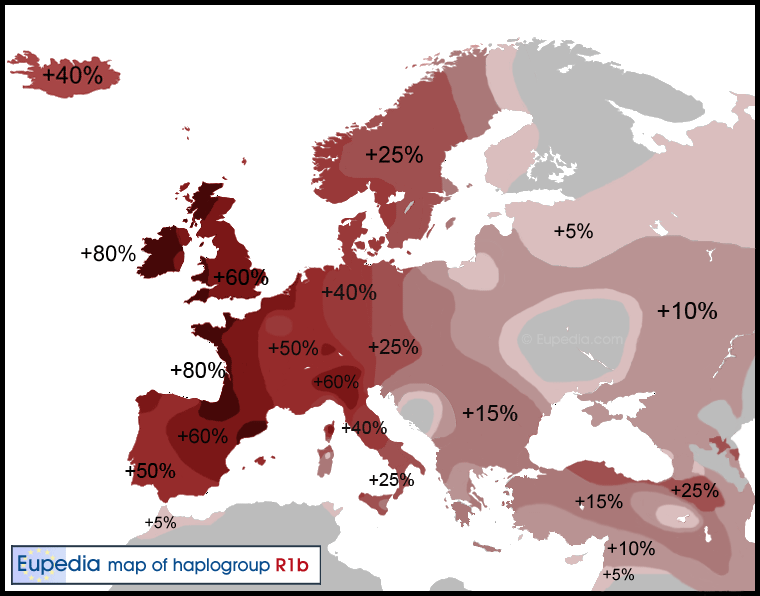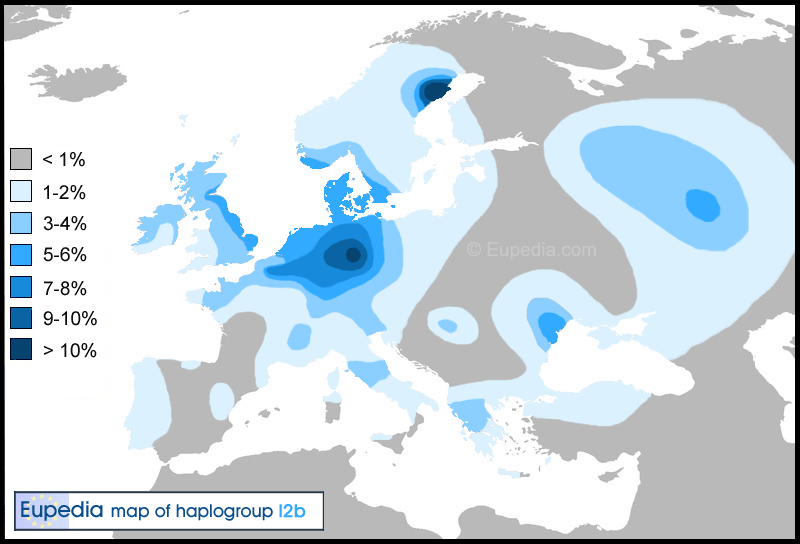Cathcart yDNA Study
Our Past... our Haplogroups
First of all, let me start with a few caveats:
- I am not a geneticist... I don't even play one on TV!
- This page is very much a work in progress—more like a notebook where I can write my initial thoughts that it is a finished paper/thesis.
- For the moment, I rely heavily on one major source: the Genetics Section of the Europedia website
- I have not yet started to analyze the results of our mtDNA participants, nor have I begun to figure out what our participant's results may mean with respect to any specific mtDNA Haplogroup identified as a result of our study.
Our Cathcart yDNA study as opened my eyes to a new world. I had assumed
several things before joining the group started by Raymond Franklin
Cathcart:
- Genetic genealogy would provide definitive evidence/proof of family relatedness. In other words, I expected that the genetic testing would clearly point out who was related to whom, and how close their genetic relationship was.
- That all participants with the last name Cathcart (or one of its derivatives) would be fairly homogeneous—that we would all be Scots-Irish/Ulster Scots with similar genetic backgrounds.
We now know that neither of my initial suppositions were correct! I will
deal with the unexpected ambiguities that have come out of our study results
in more detail elsewhere . The purpose of this page is to briefly outline our
results in terms of the discovery of at least two main Haplogroups: R1b and
I2.
As a first step in understanding these yDNA Haplogroups, the Family Tree DNA website provides an interactive yDNA migration map.
You get to this map by
clicking on the Y-DNA tab at the top of
the screen, and then on
 "Migration Maps... New" in the drop-down box.
Click on the small image to the left to see what that FamilyTreeDNA
navigation page looks like.
"Migration Maps... New" in the drop-down box.
Click on the small image to the left to see what that FamilyTreeDNA
navigation page looks like.
Since my predicted Haplogroup is R1b, that migration is the default migration path depicted in my case (the dark gray lines/boxes/circles).
(see screenshot from my computer to the right)
You can bring up additional information by hovering your mouse over the colored dots on the map (which represent the main yDNA Haplogroups).
For the screenshot to the right, I hovered my mouse over one of the blue circle icons, which brought up the migration path for the I2a group. This is depicted on the blue line, which begins in Saudi Arabia, turns West towards northern Spain, and then veers North toward Scandinavia.
You can also click on each of these colored circles to bring up more detailed information (notice where it says "click for more..." in the pop-up box in the screenshot).
The family tree DNA.com website also has a "frequency map" showing the distribution of the various Haplogroup throughout the world. However, the map is somewhat difficult to use as you cannot zoom in to see the area that interests you most—in our case, northern Europe.
Let's now move on to our two main Haplogroups...
![]()
The vast majority of our Cathcart yDNA participants—28 out of 33 as of April
2012—fall into
this category. As can be seen in the map below—and as expected—this Haplogroup is the most common in Western Europe, and is heavily concentrated
in Ireland and the Scottish Highlands (where the the Haplogroup approaches
80% of the local population).

map from Europedia website showing population distribution
The history/origin of this Haplogroup is not yet completely settled amongst the experts. It does seem clear, however, that it is not as ancient as the I2 Haplogroup—the second major Haplogroup that has been discovered amongst our Cathcart yDNA participants to date (see below).
click here for more details about the R1b Haplogroup

To quote directly from the above-mentioned Europedia website: "Haplogroup I2 is thought to represent the direct patrilineal descendants of Paleolithic Western, Central and Southeastern Europeans, roughly from Northern Spain to the Carpathians, and from the British Isles to the Balkans."
The folks at FamilyTreeDNA.com have now placed three of our participants in the predicted Haplogroup I2b1. However, there is some discussion about changes in nomenclature associated with this Haplogroup. For example, they mentioned that the I2b group is now referred to as I2a2.
For the moment, more research is needed to determine exactly what testing criteria family tree DNA is using to place each of the Cathcart yDNA participants into this group. Because of this, the map below may not be the most appropriate one... however, it at least gives the idea that this Haplogroup is very likely more associated with Northern Europe and the Baltics than is our other primary Haplogroup, R1b.

map from Europedia website showing population distribution
